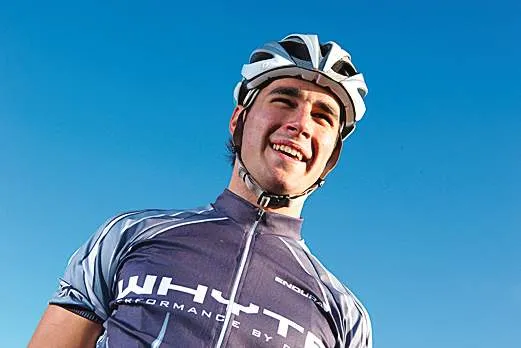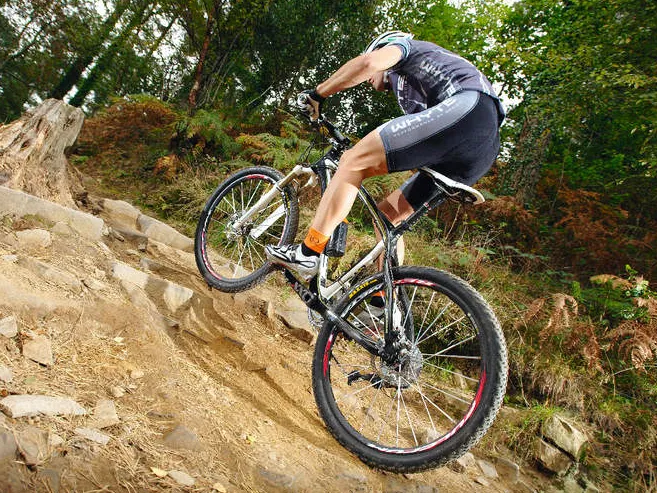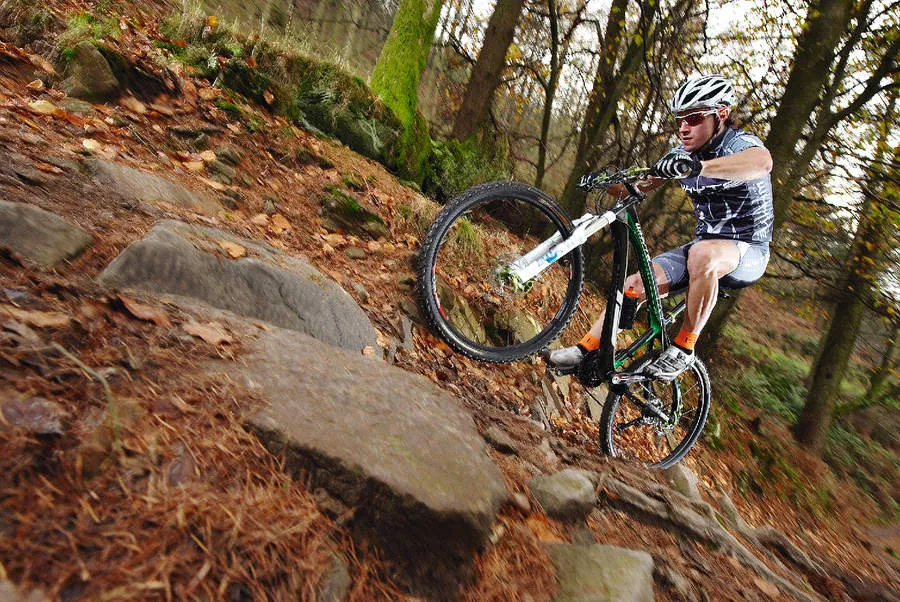The joy of riding up hill and down dale is that anyone can do it, but cross-country pros do it faster and for longer. Here, cross-country ace Billy Whenman teaches you the essential skills you need to get riding well and help you overcome the tricky scenarios you might encounter on the trail.
1 Getting airborne
Accidentally getting bucked into the air is dangerous. Being able to control the bike and stay calm should this happen is essential – but the only way to do this is to learn how to jump things.
Out on the trails, the main offenders are roots. They can be used to hit and gap sections of trail, and can equally pop you up into the air when you’re least expecting it. Staying loose is your best bet – if you’re relaxed you’re more likely to make subtle movements and regain control.
Spot the take-off: Rolling along the trail, pick the root or rock you want to pop off, and keep your eye on it. As you get nearer, inspect the landing area – you want to land on a smooth piece of ground that has a good run-out.
Pop: Depending on how far you need to jump, you’ll have to either pull up hard, or simply hit the root and then lean back.
Relax: As the bike kicks into the air, shift your weight back to account for the rear wheel popping up, and allow the bike to come up between your legs.
Heads up: Keep your eyes on the exit and your head up – it helps balance the bike. Stay relaxed and try to keep the bike level using small back and forth movements.
Softly softly: Even if the landing is a smooth one, gently ease the bike into it and use your whole body to absorb the impact. Make sure you keep your head up while doing this.
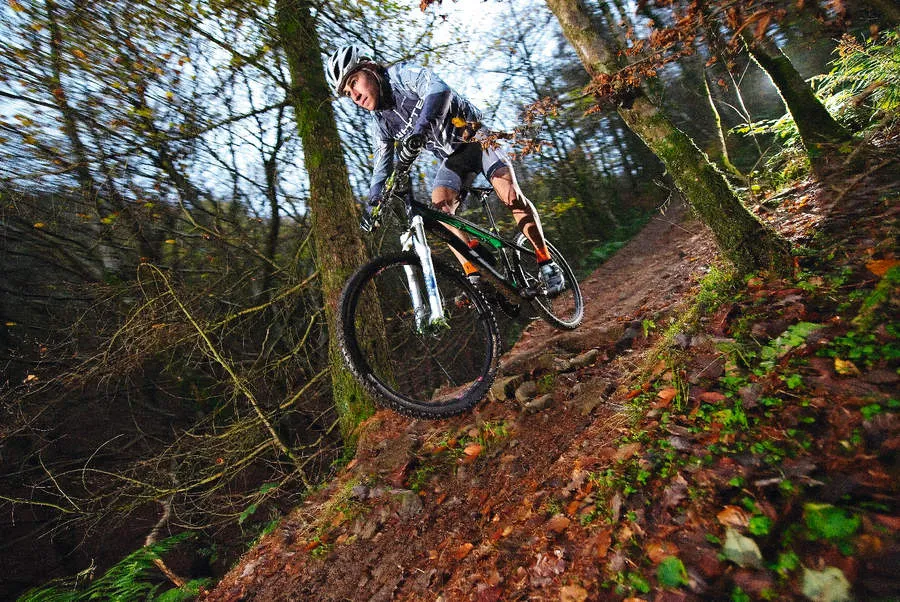
Billy's top tips:
> Look ahead at the trail, plan your route in your head and asses how big the gap is that you need to clear.
> Look where you need to land, then as you’re in mid-air, start to lean forward and push the front end down to your landing spot, keeping legs and arms bent.
> If you accidentally get airborne, remember not to panic, keep the arms and legs bent, and don’t stiffen up.
> You can use popping off a root to your advantage as you could clear a section of roots to keep a good line and speed up.
2 Rolling down steep banks
When you’re riding with your saddle at full height for pedalling efficiency, your centre of gravity becomes relatively high on the bike – so when rolling down steep terrain it’s important to lower your weight, and keep it towards the rear wheel to avoid losing control.
Before riding anything steep for the first time, you should always check it out safely on foot. Ensure that there are no rocks or roots that can catch your wheels or pedals, and check that the transition at the bottom is smooth, or at least that you’re aware of a potential hazard.
Body position: On approach, make sure you have your best foot forward on the bike and you’re in a relaxed position. Keep your eyes on the edge of the bank, and as you get nearer, move your eyeline to the bottom and then the run-out.
Brake check: You don’t want to brake hard – you could slide or send yourself over the bars. If the bank is long just squeeze your brakes – don’t grab them!
Weight back: As the bike rolls over the edge, let the front drop away from you – stretch your arms out and push your butt back over the saddle. In time, you’ll feel how far back you need to be to get the balance just right.
Heads up: As you near the bottom of the bank, make sure you’re looking forward and are ready to straighten up. A common mistake when learning is not returning to your normal position as the bike straightens up, and looping out off the back as a result.
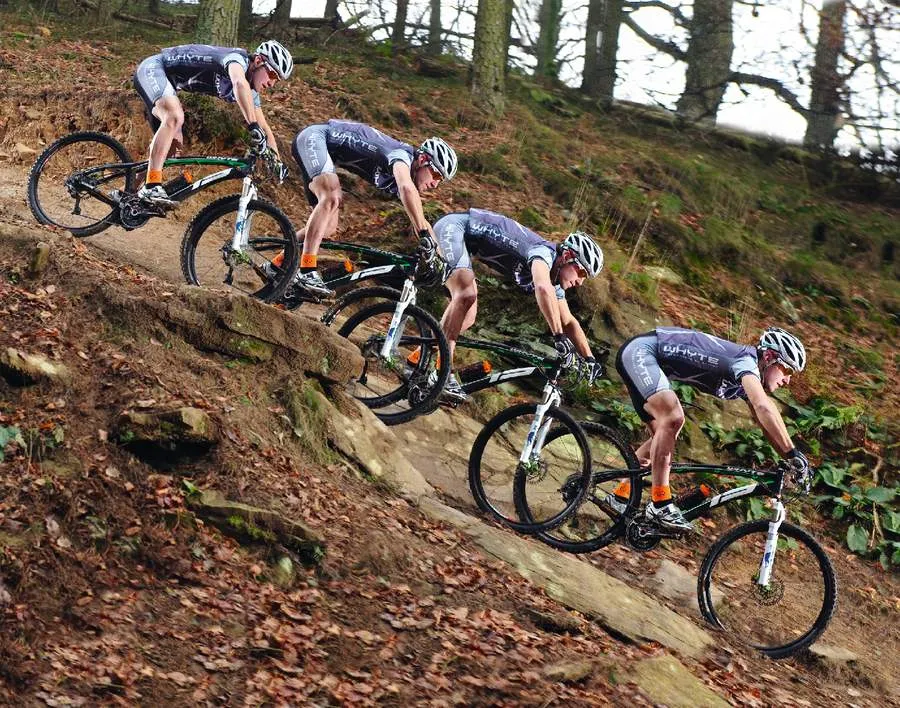
Billy's top tips
> If you’re completely new to descending try lowering your saddle height so you can get the hang of the technique. When you’re comfortable with it you can raise it back to your correct level.
> When riding a steep bank you’ve not ridden before, stop and check out the terrain before you decide whether to ride it. Make sure it’s rideable and has a run-out space.
> Adjust your weight position depending on how steep the bank is, lean further back for steeper banks and remain forward for shallower runs.
> Keep your knees and arms bent to absorb the G-out and any bumps on the way down.
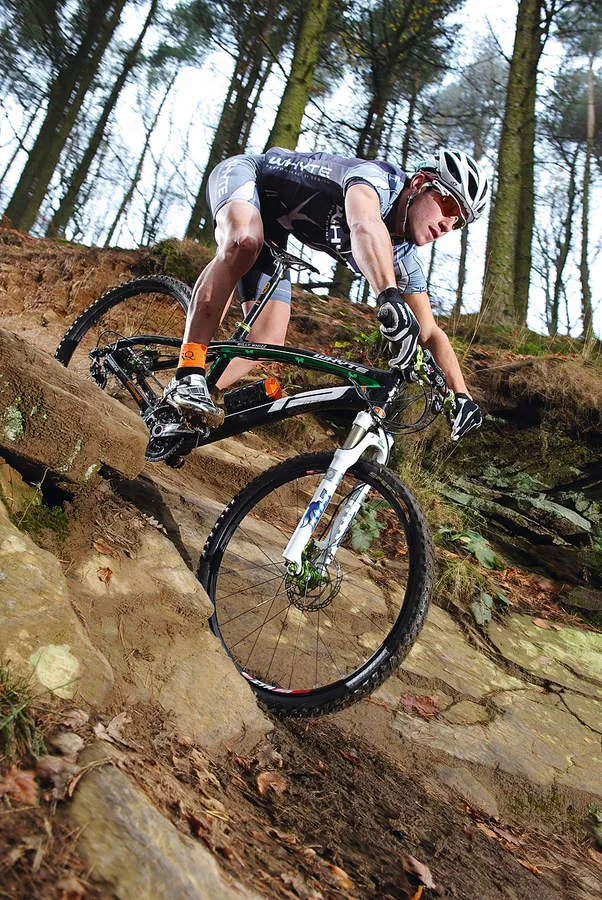
3 Steep climbing
Steep climbing requires a balance of power, fine-tuned body weight and the ability to put the power to the pedals smoothly and efficiently – in or out of the saddle. Being able to maintain a potentially uncomfortable position is also a key to successfully climbing really tough ascents.
On the edge: Some climbs are too slippery to ride out of the saddle, so you’ll need to remain seated. This keeps weight on the rear wheel for traction. You’ll feel the front wheel trying to come up off the floor, so you’ll need to keep your weight as far forwards as possible on the saddle without engulfing it.
Drop those elbows: You need to really get the top of your body down low for these climbs, so drop your elbows. This allows you to pull on the bars so you can lever your legs against them.
Stamp on the pedals: When sprinting, you can take advantage of clipless pedals and pull up on one pedal as you push down on the other – but don’t pull up too hard if it’s steep, because you could cause the rear end to break loose.
Tug on the bars: For every down-stroke on the pedal, pull up on the opposite end of the handlebar – this is known as honking and helps you get every ounce of leg power to the pedal. Using bar ends forces you to ride in a slightly different position, allowing your biceps to pull up more on the bars.
Attack the hill: Even when you’re riding out of the saddle, you need to keep your body weight fairly even between the two wheels. So you can keep yourself low at the front while still putting the power down to the pedals.
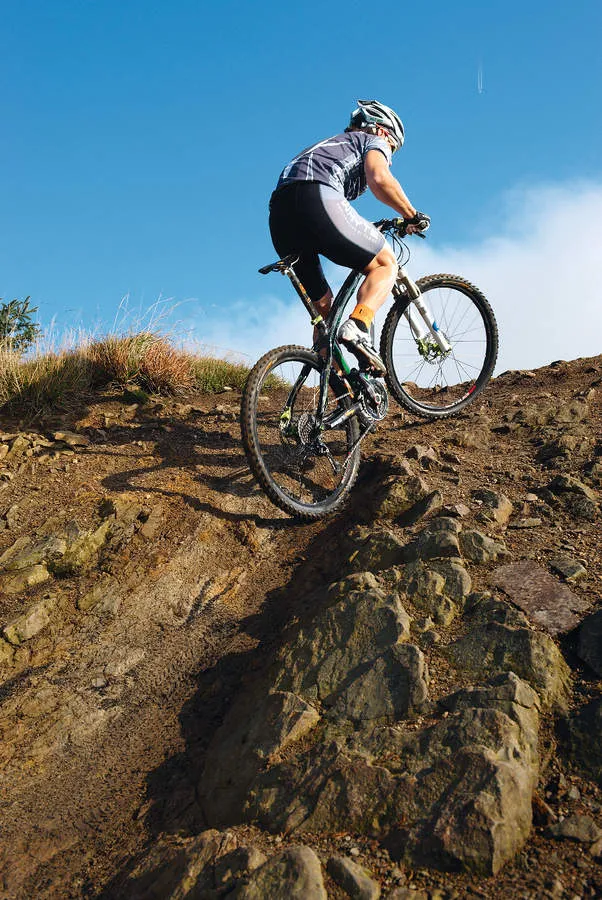
Billy's top tips
> Look for obstacles and pick your line, avoiding big boulders or roots. Choose the smoothest line available.
>Select a gear you’re capable of spinning up the climb. You don’t really want to be changing gear too much while climbing.
> As the ascent gets steeper, move your weight forward so you’re further over the bottom bracket, enabling you to get maximum power through the cranks to the rear wheel.
> If there is an obstacle like a step, don’t brake – instead, as you near the step, move your body weight back, and pop the front wheel up onto the obstacle.
> As you roll over the step, shift your body weight forward over the front of the bottom bracket.
> You can then pop the rear wheel up onto the step and continue climbing, or simply ride over the bump so the rear wheel just rolls onto it, then continue riding.
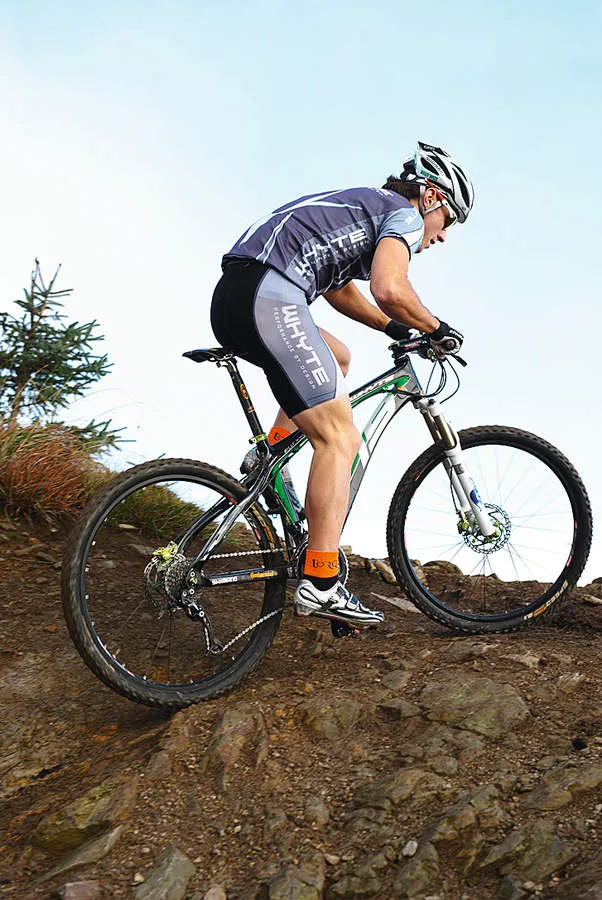
4 Switchback turn
Climbing is about more than just having the legs to propel you up a hill – you need good skills to get the most out of your bike. Line choice is fairly obvious when riding downhill because you can judge the speed at which you’ll hit obstacles better, but going uphill it’s less obvious. You can lose traction or run out of steam trying to make it to certain sections. Make it easy for yourself and pick the right line.
Approach: Switchback turns are usually easy to ride, but hard to master. As you’re approaching the turn, take a look at how hard the corner is – you need to make it as wide as possible. Make sure that you’re spinning a gear rather than pushing one, because your pedalling motion needs to be as smooth as can be.
Pre-empt: Before you turn, make a slight ‘S’ shape to help you on to the outside of the bend. Use the speed you generate to carve up the bank a little. Keep looking around the turn.
Power down: Keep the power down if you’re using the bank to make the turn wider – that way you can treat it like a berm. If you’re just using the width at the start of the turn to give yourself some room, keep an eye out for obstacles near the exit.
Exit: As you’re leaving the turn, it could get steeper, so you should try to speed up your rhythm. When changing gear on hill climbs, get a couple of hard cranks in your current gear fi rst, before releasing the pressure on the cranks as you change gear. Think of the technique as a clutch system for your bike that will save you from crunching through the gears.
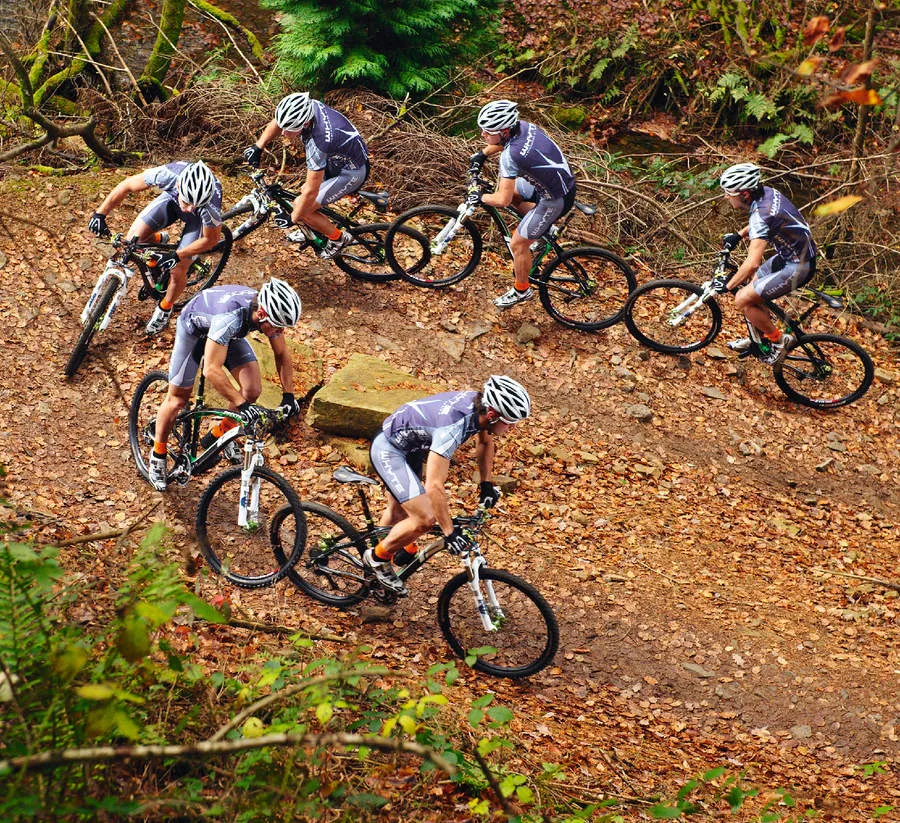
Billy's top tips
> If the switchback is bermed, then you can ride it as you would a downhill berm. Hit it with all your speed and push into it, looking forward at the exit and upcoming track. The berm will lead you back onto the path.
> Use the full width of the trail, so that as you hit the apex you can then let the bike ride you out to the far side again.
> Look ahead at the trail coming up, visualise the way up and take it.
> Stay smooth, keep your movements fluid and keep the turn as round as possible. Jerky movements can ruin your line
5 Traction and line choice
Cross-country bikes tend to suffer slightly more than big downhill bikes, mainly because they’re light and usually have tyres that are better suited for rolling resistance than grip. But fi nd yourself a gnarly uphill section with rocks, roots and so on and you’ll discover how the right line combined with the correct body position will help you gain traction.
Cadence: On cross-country bikes – particularly hardtails – maintaining traction is an art. Simply pedalling hard will force the rear wheel to break loose, so maintaining a good rhythm is important – too hard a gear and your wheels will spin, too easy and you’ll fry your legs.
Relax: Stay loose on the bike. If you’re rigid, the bike will bounce off bumps rather than roll over them. Even when seated, try to hover when riding sections where you’re relying on traction – be prepared to move your weight back and forth constantly.
Avoid trouble: When riding uphill, anything that bumps your wheels off the ground can break your flow and lose your traction, so try to avoid them. Often they’ll be on the best line, so try bunnyhopping them – although this can be tricky when pedalling hard. Above all try to maintain a good rhythm.
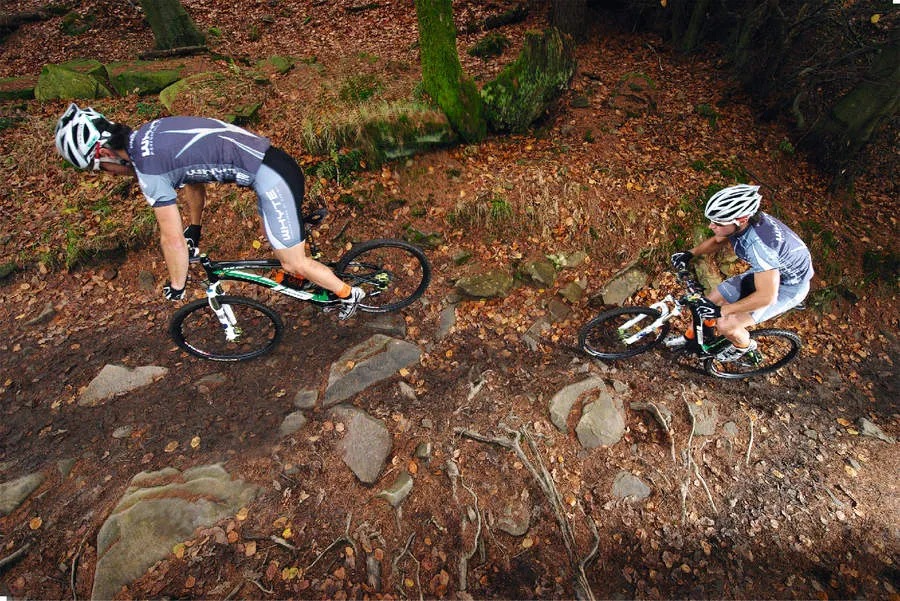
Billy's top tips
> Hardtails are great for riding at speed, but to do so you have to practise the technique or you’ll find yourself bouncing all over the shop and more than likely to crash.
> Cross-country bikes have less suspension travel and skinnier tyres than an enduro or trail bike, so you have to adapt to conquer the trail.
> It’s usually best to look for the smoothest route, as that way will be quicker than hitting roots and losing your momentum and speed. Alternatively you can hop over obstacles to keep a tight, fast line.
> Traction is a bit harder to get than on a full-suspension bike, but you can improve this by running lower tyre pressures, which will enable more tyre to be in contact with the trail, giving you more grip on uneven terrain.
About your tutor
Billy Whenman has been racing bikes since he was 11, so has a wealth of cross-country experience. He’s also a great hope for a medal at the 2012 Olympic Games in London. Racing for Whyte Bikes in the Elite/Under-23 category, Billy has raw talent oozing from his pores – he’s an aggressive rider considering his cross-country bias and is great to learn from because he still favours a hardtail.
